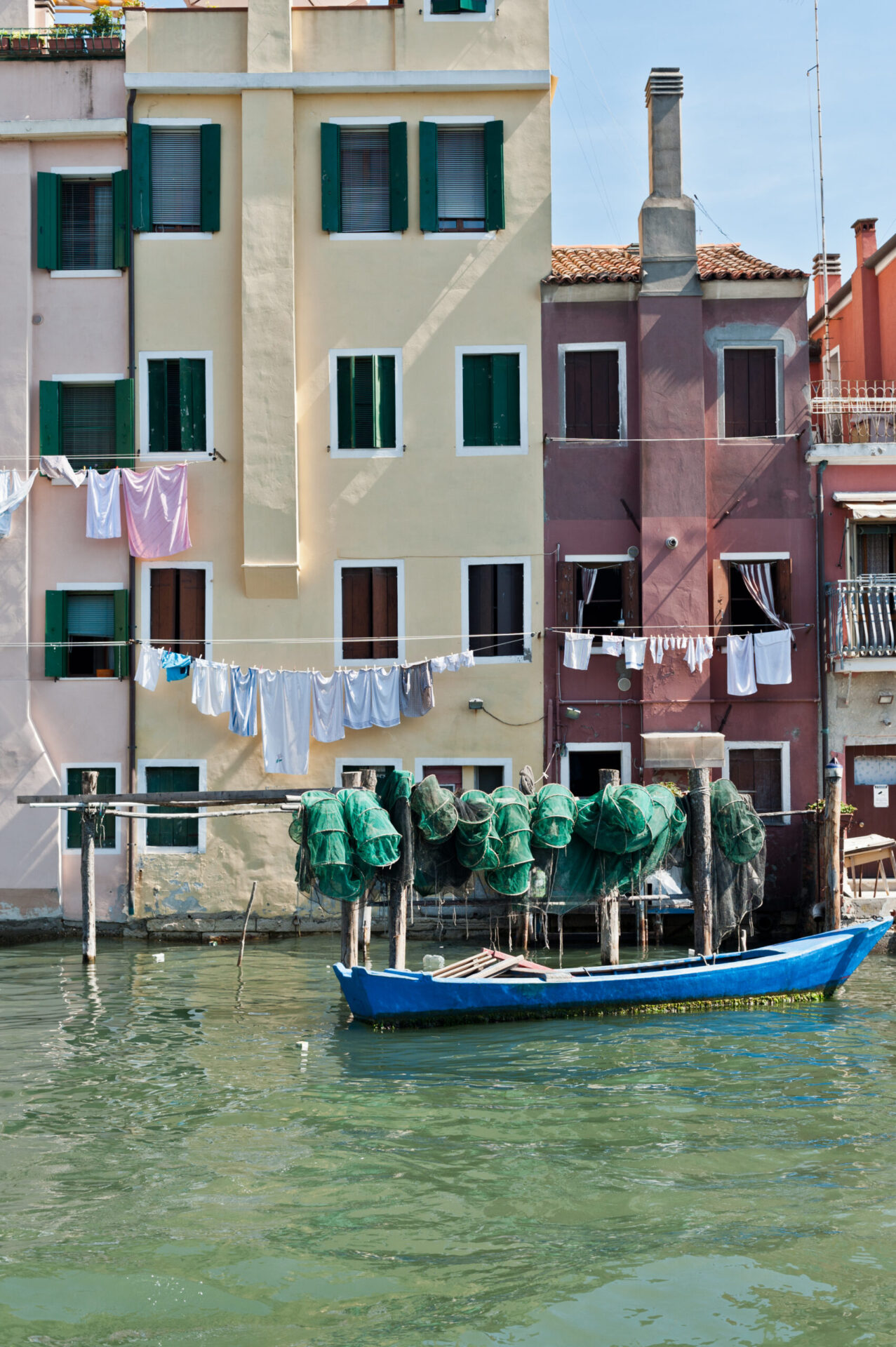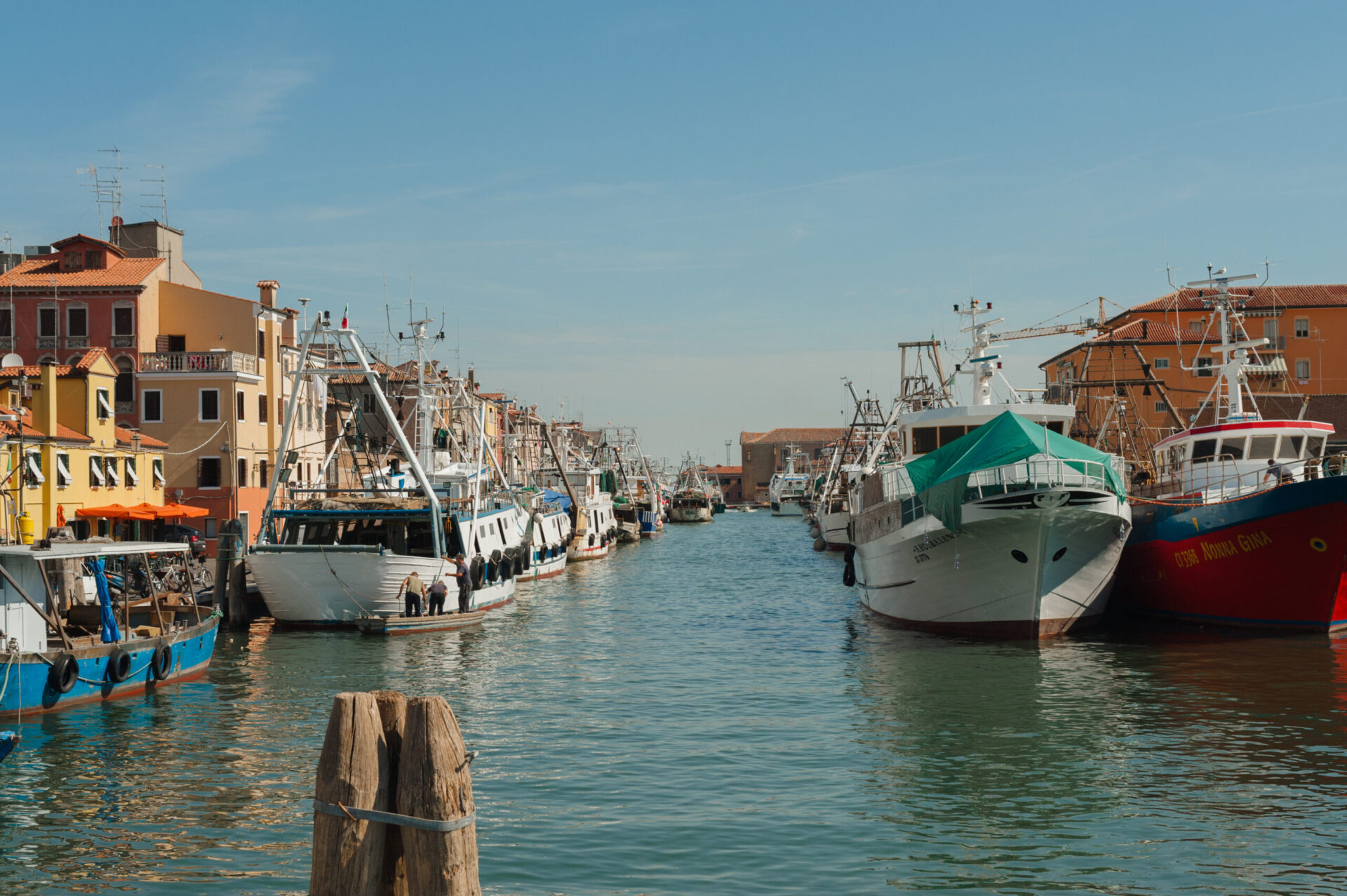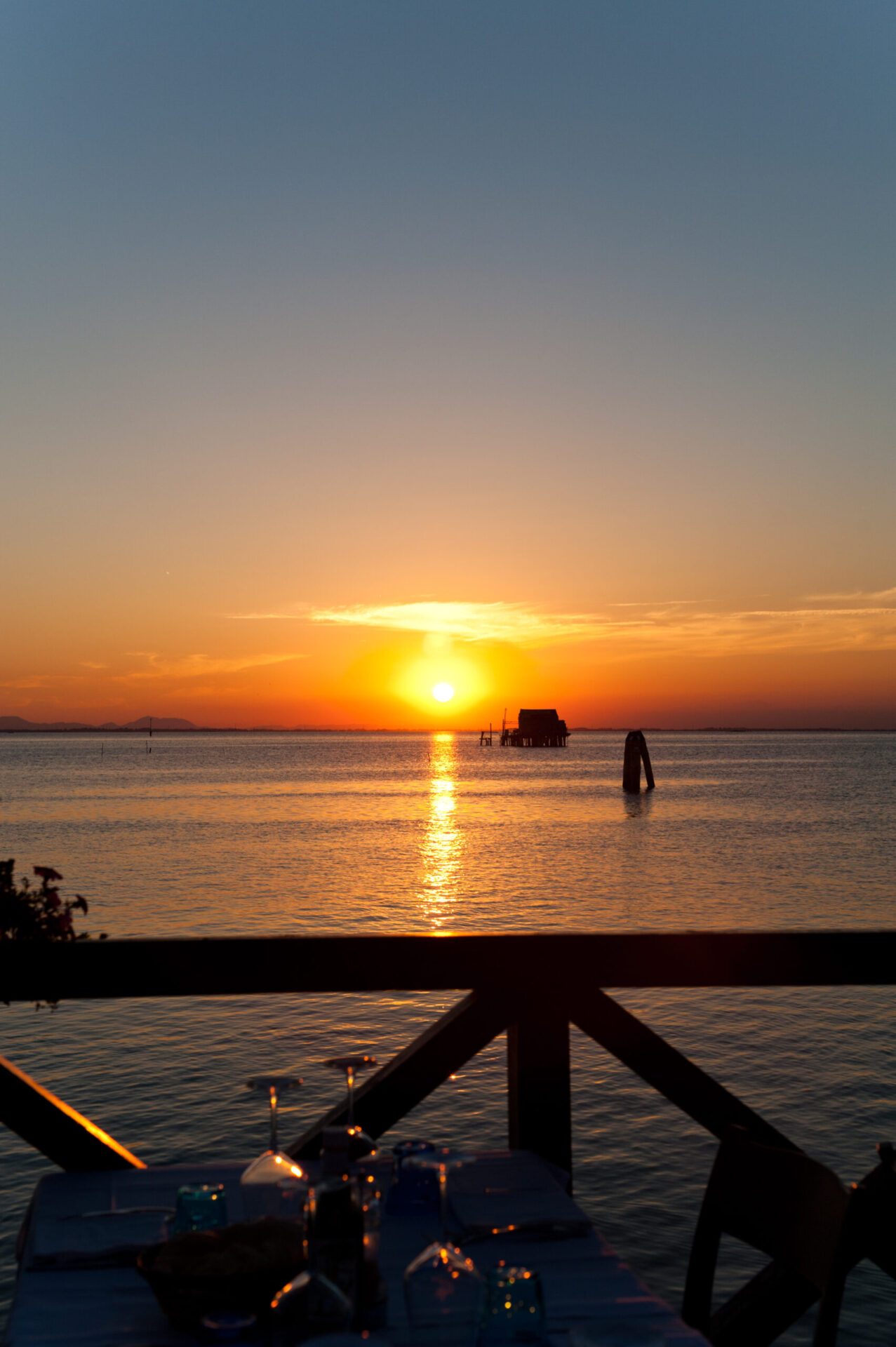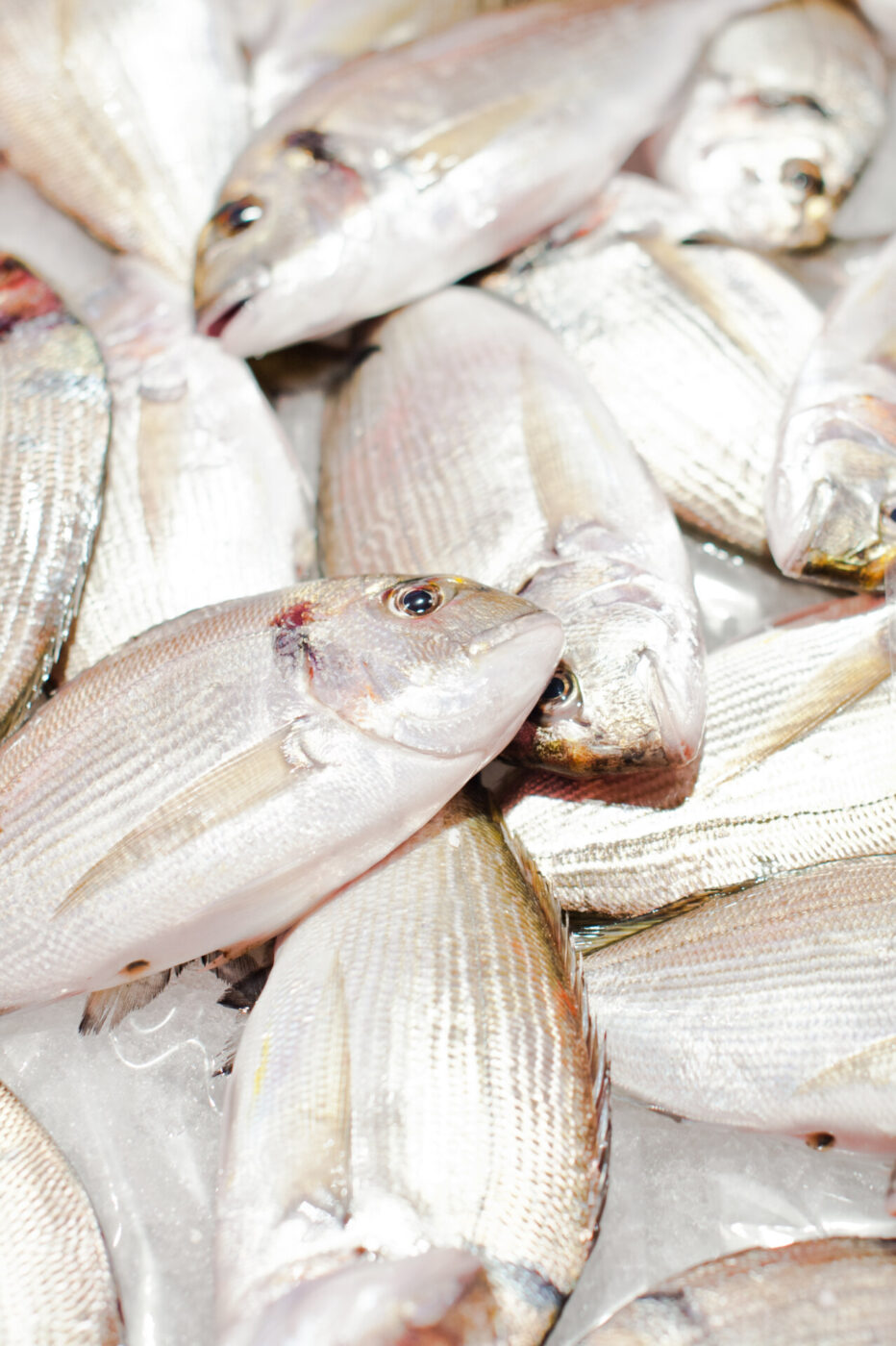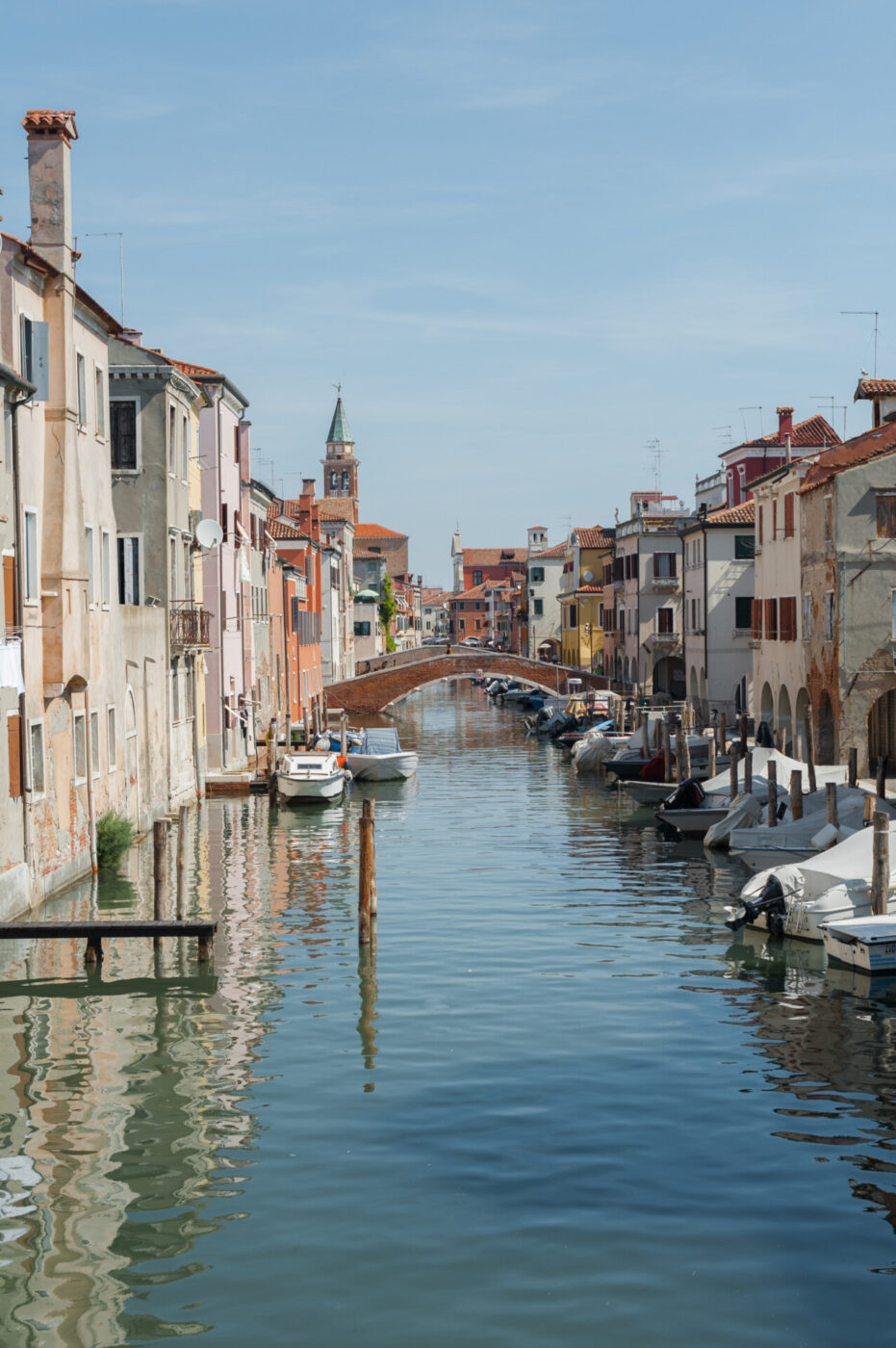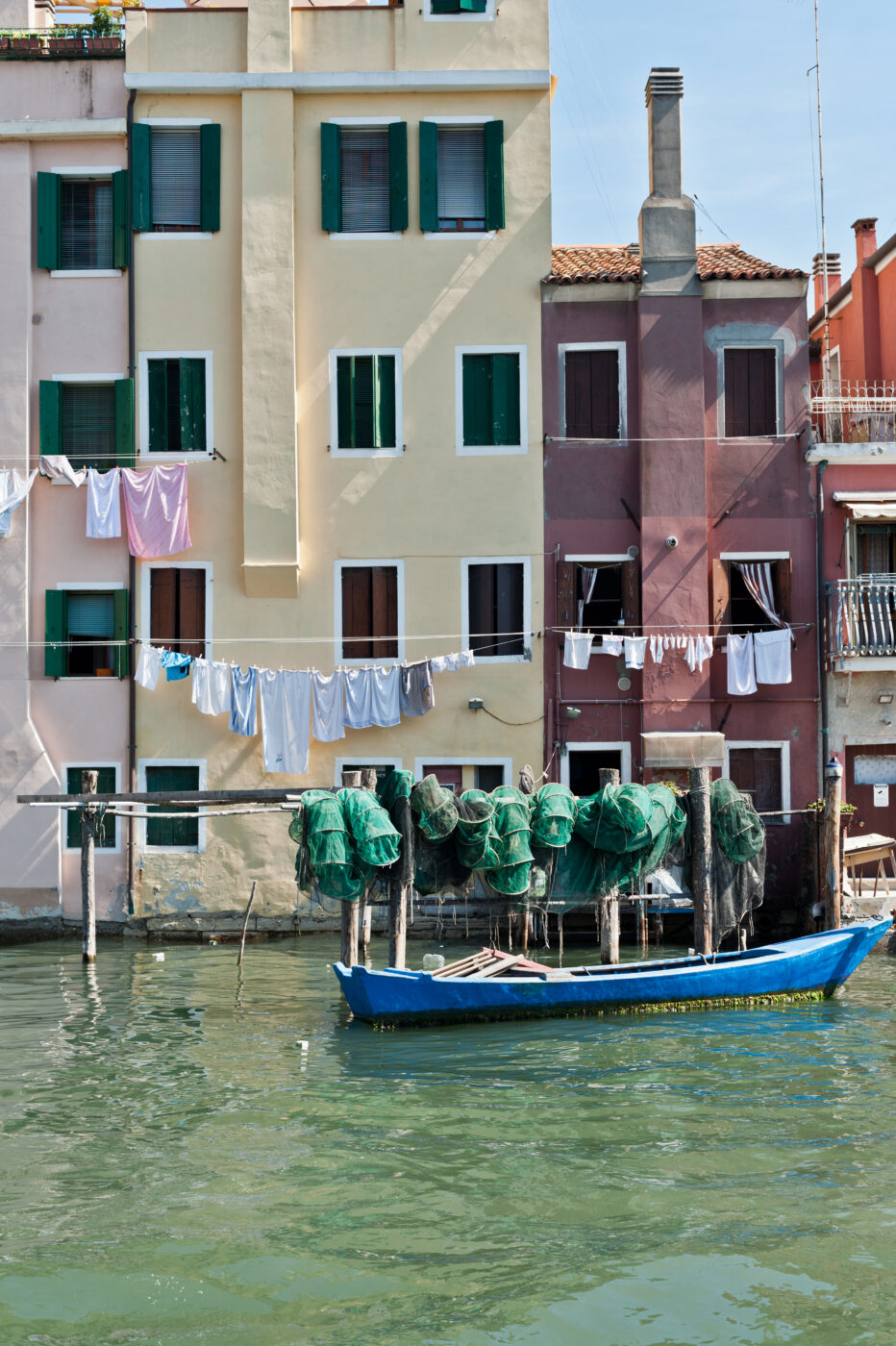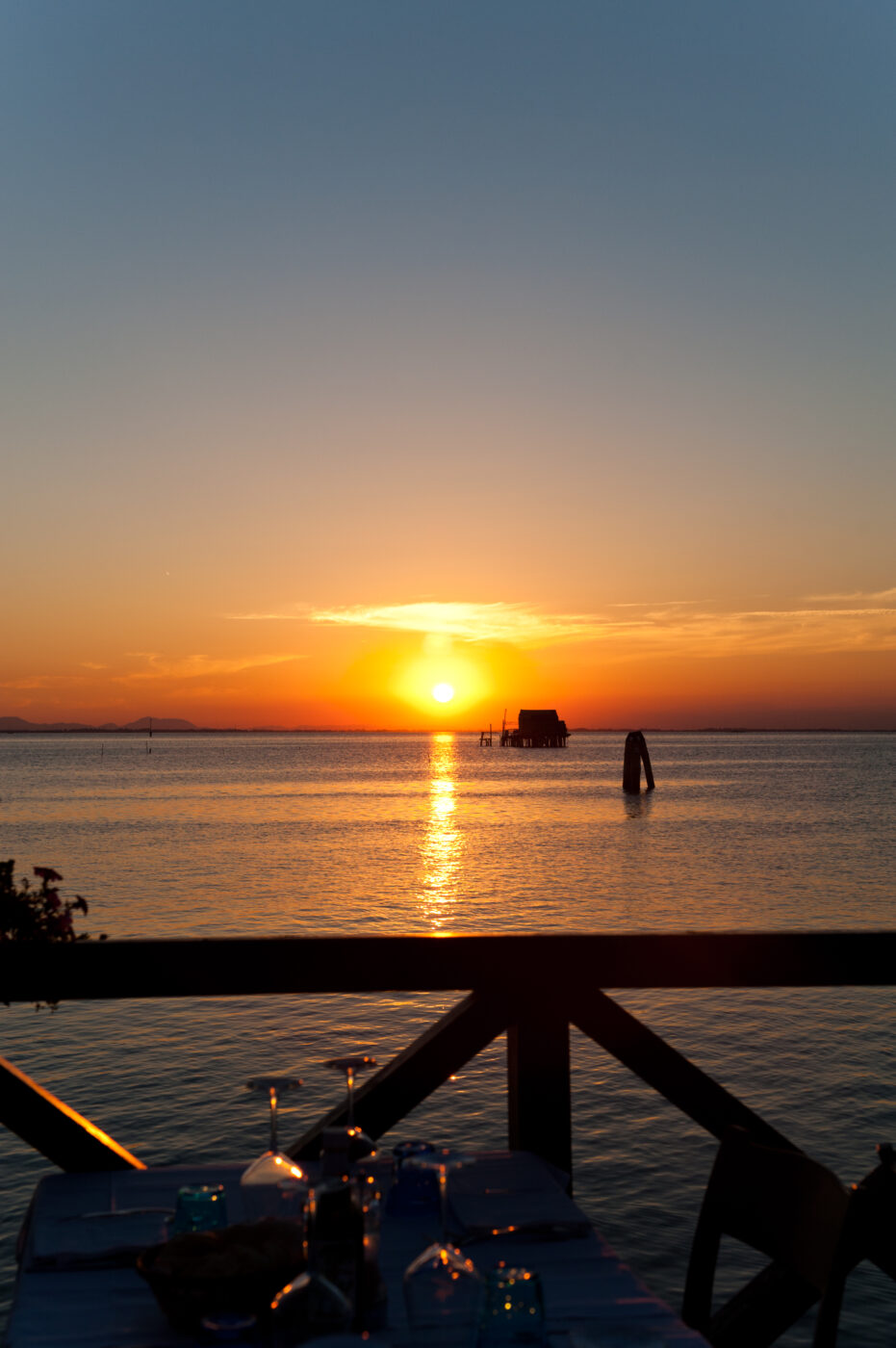Enclosed between marshlands and sea, at a strategic crossway of river trade routes between East and Northern Europe, Chioggia was erected on a cluster of islands some 16 miles south of Venice, at the southern end of the Venetian lagoon. The commune’s history dates to Byzantine times: its heritage is rich and time honored, and its success built on salt. And yet, for centuries, it has dwelt in the shade of its younger, prettier sister, as Venice outshined it in charisma, commercial success, and cultural relevance.
Today, just as Venice is struggling to deal with the disproportionate number of visitors cramming its calli, Chioggia is receiving some much-deserved attention and might become part of the solution in relieving some of the former’s pressure. Already popular with tourists from Central and Eastern Europe for its quaint center and the close-by sandy beaches of Sottomarina, Chioggia’s recent surge in fame can be traced to the The New York Times placing it at the top of its annual “52 best places to visit in 2022”–the list focused on sustainable destinations, away from overtourism. The city was also in the running to become Italy’s 2024 Cultural Capital, a title that was ultimately thrown Pesaro’s way.
Coincidentally, Chioggia is known as la piccola Venezia–little Venice. Strolling through its calli, gazing at the colorful palazzi and canal reflections, you’ll sense a shared heritage, a common destiny with the islands that sit on the northern side of the lagoon. And yet, Chioggia feels at once more city-like–a magic combination of primal and urban.
Visiting from Venice entails some planning and an assorted mix of transport means–ferries, boats, and waking included–and a day trip might feel rushed. Taking your time in the area is the best option, as the number of attractions and the quaint atmosphere make it well worth a longer escape. I grew up in the countryside that edges the Southern Lagoon, so Chioggia has been a much-loved family destination for a Sunday car ride, seafood lunch, and lazy stroll. Now that I live in Venice, I find that an ideal (and green) way to reach Chioggia–particularly in the warm season–is on two wheels, following the E5 cycling path that runs along the strip-like major islands of Lido, Pellestrina, and Ca’ Roman. Starting with this bike route, here’s a 36-hour itinerary for charming Chioggia.
DAY 1
MORNING
If the sound of an island-hop and bike ride sounds enticing, then start from the Lido near Venice. Rent a bike at one of the many rentals located close to the Santa Maria Elisabetta hub (average daily rates are €10 per bike) and follow the signs for Malamocco and Alberoni. Dash along pine-shaded roads and take in scenic views of Venice from the opposite side of the lagoon as you approach the southernmost tip of the islands. Wait for the Line 11 ferry, which in a pinch will take you to the next island, Pellestrina. Resume cycling–following the handy signage that marks the E5 route–and you’ll soon reach the picturesque heart of this humble fishing island, which provides plenty of baretto or kiosk options for quenching your thirst. Keep heading south, along the murazzi that protect these islands from high tides, all the way to the natural reserve of Ca’ Roman, which, with its wild sand dunes and thick vegetation, will feel tremendously inviting as a place to rest your legs and take a sun-kissed breather. One last waterbus ride from Ca’ Roman, and you’ve arrived in Chioggia.
For reference, the whole journey might take 3 to 4 hours depending on ferry connections and cycling speed. Leaving from Lido around 9 AM, just as the rental shops open, will get you to Chioggia in time for lunch.


LUNCH
Vigo and the port of Chioggia are often buzzy and will immediately feel like a welcome change of pace after hours of silent contemplation. Lock your bike and stroll along the main promenade of Corso del Popolo in search of lunch.
Chioggia’s culinary scene reverts around time-honored fishing traditions and its vocation for vegetable farming. Because of its strategic location between lagoon and sea, and thanks to its fertile sandy and sodium-rich soils, the city is famous both for its delicious seafood as well as for its deeply flavorful vegetables, among which are Chioggia pumpkins, sweet and delicate onions, and the rosa di Chioggia radicchio.
You’ll find all these and more at El Gato, one of the best restaurants in town. Here, great classics are served alongside dishes that highlight the freshness and flavor of the raw ingredients–fish and vegetables above all. Don’t miss their shellfish catalana and any dish with the local bivalve, fasolari.
AFTERNOON
After lunch, it’s time to explore the artistic treasures of the city, which are mostly concentrated along the main road that runs down the center. The size of the town makes it small enough to be enjoyable on foot, so head out for a leisurely stroll with pretty views of canals lined with old and new boats and historical buildings with colorful facades. Even without an itinerary, Chioggia is a perfectly charming place to explore by whim.
Still, there are a few places worth a visit. Starting from the end of Corso del Popolo, you’ll find Porta Garibaldi, a freestanding arch which marks the beginning of the city center; then, the imposing Cattedrale di Santa Maria Assunta, with paintings from Tiepolo, amongst others; and finally, the Refugium Peccatorum, a famous marble statue of Mary and baby Jesus underneath a little golden dome, positioned right alongside the marina promenade.
But the main attraction is the Torre di Sant’Andrea, a bell tower which hosts the world’s oldest clock, dating back to 1386. Inside is a vertical, seven-story museum that covers key aspects of the history of Chioggia, from religious objects to cartography. The fifth floor boasts the best attraction–a close-up view of the marvelous clock–but the 7th floor is a close second with a panoramic terrace offering breathtaking views of Chioggia and its surroundings.
APERITIVO & DINNER
By the time you descend, it might just be time for aperitivo. Nowhere beats the sundown drinks and snacks at Osteria Fronte del Porto, right at the end of the Corso, past Piazzetta Vigo, which, with its beautiful bridge and lion-topped column, also deserves a quick stop.
Grab a chair facing the port and enjoy the sight of the sun dipping in the water of the lagoon as you sip a well-made spritz or a glass of local Soave or Valpolicella. And although their cicchetti selection might be tempting enough to turn an aperitivo into a snacking dinner–and I can never resist ordering a few–the best move is to peek at their menu, as their seasonal offerings, particularly the seafood pasta dishes, never disappoint.
SLEEP
Check out Casa San Cristoforo for rooms and studios decorated in a contemporary, slightly quirky fashion using sustainably sourced materials.
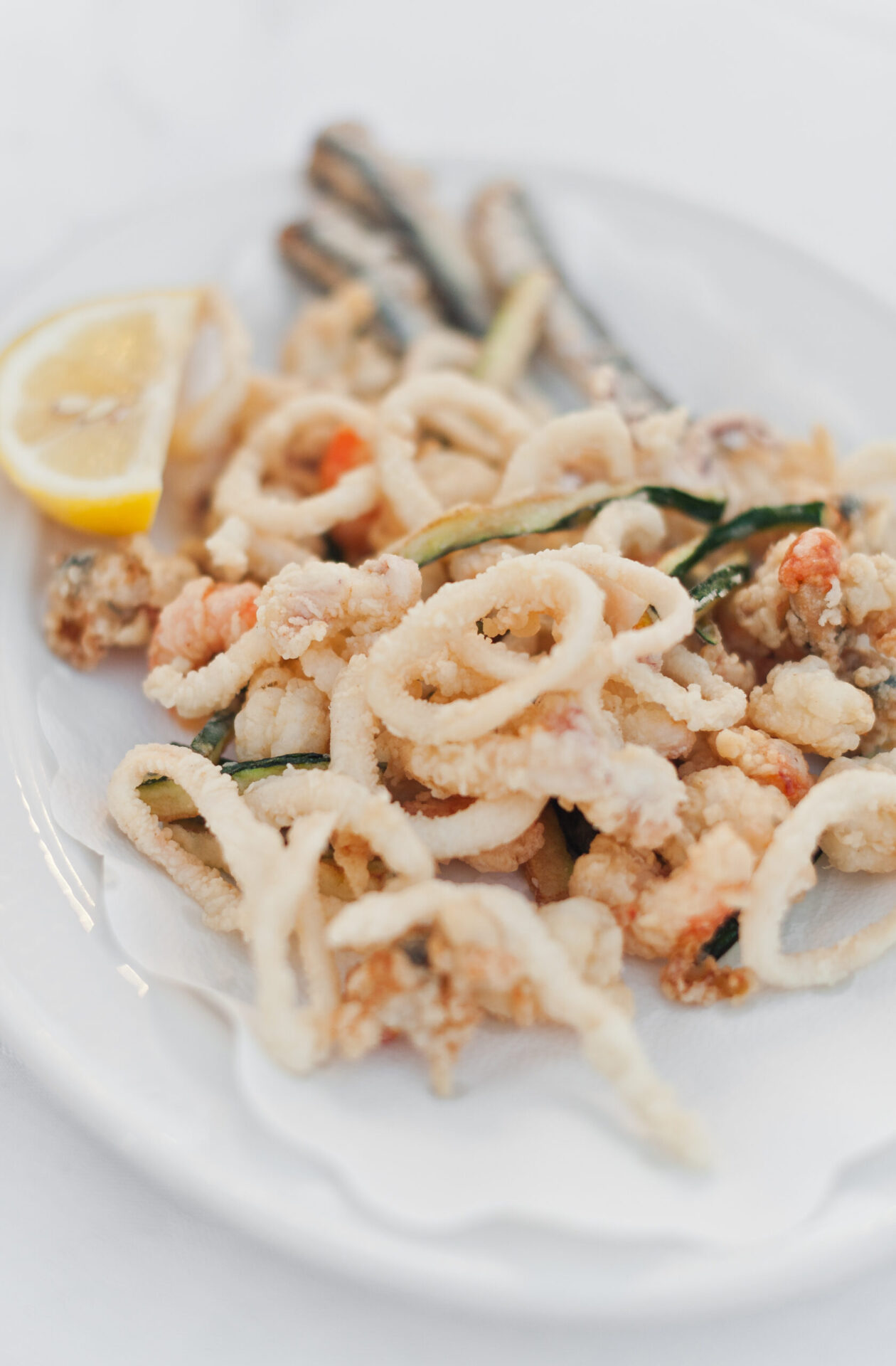
DAY 2
MORNING
Pasticceria Flora di Martin Barbara, strategically located along the corso, is the best place to fuel up on morning cornetti and cappuccini with prime people watching.
Don’t even think about hitting the beach before a visit to the pescheria, whether or not you wish to buy seafood–it’s worth it just for the colorful, chatty, and tiny-bit-rowdy atmosphere alone. Peek at the wide displays of the freshest fish and seafood, many of which are right from the Adriatic Sea, and chat with the stall owners to get their tips on how to best prepare this or that catch. It’s a glimpse into the local culture at its realest.
LUNCH
If you’re not fished out yet, or better still, if the fish market made you hungry for some sea and lagoon delights, snatch one of the few tables at Al Ghebo, where twenty-something Chef Federico Penzo will treat you with his inventive cuisine inspired by local flavors and the freshest ingredients.
AFTERNOON
In the afternoon, pick up a bag or two of the traditional bussolà (ring-shaped sweet or savory biscuits) at Panificio Manfredi e Bullo. Then, head to Sottomarina to relax on the sandy beach, or take a walk all the way to the dam, where you’ll pass traditional buildings devoted to fish farming.
DINNER
In warmer months, Le Tegnùe is a hotspot for beachfront dining with–once again–deliciously home-grown vegetables and fish. And, if you haven’t had a fritto misto yet, grab one here. It’s one of the best ways to end your stay in this charming gem in the Southern lagoon.


